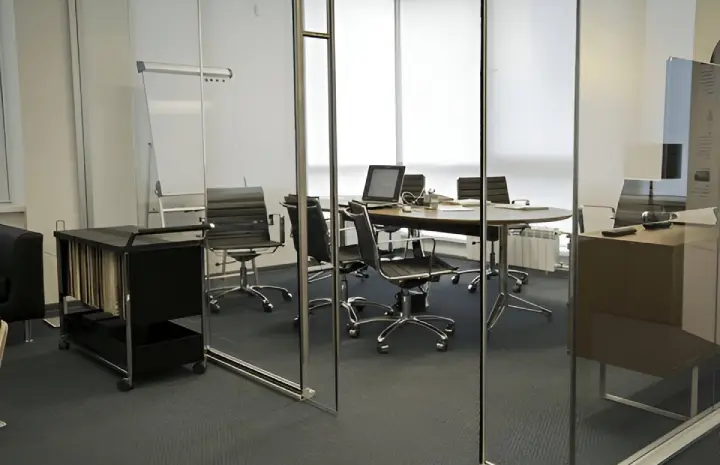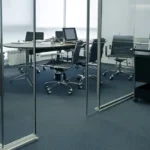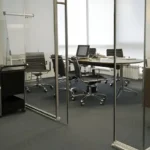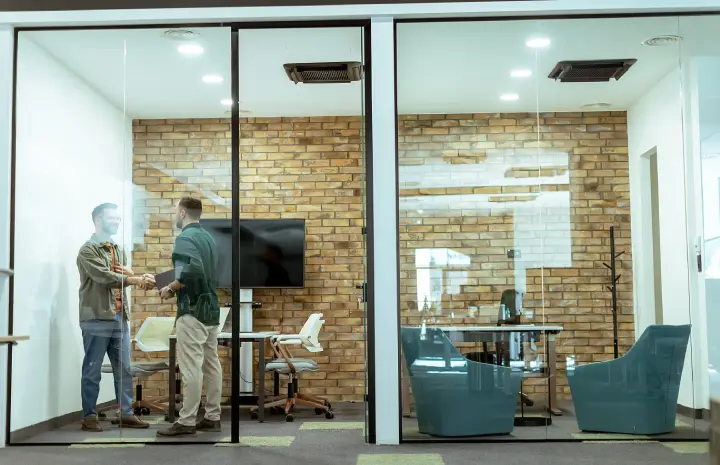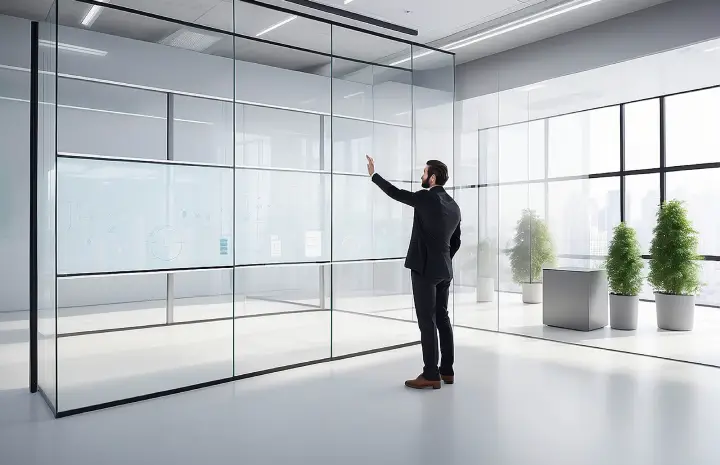How Sliding Glass Walls Redefine Workplace Collaboration
Workplace design has shifted dramatically in recent years. The modern office is no longer about isolated cubicles and heavy walls — it’s about openness, transparency, and flexibility. Among the design features leading this transformation are Sliding Glass Walls, which have quickly become a favorite for businesses aiming to balance collaboration with privacy.
These walls are more than just stylish partitions. They create dynamic environments where ideas flow freely, teams work better together, and spaces adapt to changing needs. In this blog, we’ll explore how sliding glass walls are redefining workplace collaboration in 2025 and beyond.
Why Collaboration Matters in Modern Offices
Collaboration is at the heart of innovation. Companies that encourage teamwork are more productive, creative, and adaptable. However, physical environments play a huge role in enabling collaboration. Traditional opaque walls block visibility and communication, while open layouts sometimes lack privacy.
Sliding Glass Walls provide the perfect middle ground — transparency for openness, flexibility for dynamic work, and options for privacy when needed.
How Sliding Glass Walls Enhance Collaboration
1. Visual Connectivity
One of the greatest strengths of sliding glass systems is visibility. Employees can see one another across different spaces, promoting a sense of connection even when they’re not physically in the same room.
Impact on collaboration:
- Encourages spontaneous interactions.
- Creates a sense of unity between teams.
- Breaks down the psychological barriers created by solid walls.
2. Flexible Work Environments
Collaboration requires different settings — from quick brainstorming huddles to private strategy meetings. Sliding Glass Walls allow offices to adapt instantly.
- Open the walls for large group sessions.
- Close them for smaller, focused meetings.
- Combine spaces to host events or training.
This flexibility ensures that collaboration can happen in the right environment every time.
3. Natural Light Improves Team Energy
Research consistently shows that natural light boosts mood and productivity. Sliding glass systems maximize light flow, ensuring all areas of the office feel bright and energized.
Impact on collaboration:
- Brighter spaces encourage creativity.
- Improved mood fosters positive teamwork.
- Reduced fatigue keeps teams engaged longer.
4. Balancing Transparency with Privacy
Collaboration doesn’t always mean being exposed. With options like frosted or smart glass, sliding partitions strike a balance between openness and confidentiality.
Use cases:
- Transparent walls for shared spaces.
- Frosted glass for private yet connected meeting rooms.
- Switchable smart glass that transforms instantly for sensitive discussions.
This adaptability supports both open teamwork and focused privacy when needed.
5. Encouraging Spontaneous Collaboration
When teams can see what others are working on, collaboration happens more naturally. Sliding Glass Walls make offices feel interconnected, inspiring cross-department discussions and quick problem-solving.
For example, a team in a brainstorming room can be easily observed and joined by colleagues without formal barriers.
Benefits Beyond Collaboration
While boosting teamwork is their primary advantage, sliding glass partitions also provide broader benefits:
- Space Efficiency: Sliding systems save floor area compared to swing doors or fixed walls.
- Professional Aesthetics: They give offices a modern, sleek, and high-end look.
- Cost Savings: More affordable and flexible compared to permanent construction.
- Sustainability: Improved natural light reduces reliance on artificial lighting.
These advantages make them a long-term investment for growing businesses.
Sliding Glass Walls vs Traditional Walls
| Feature | Sliding Glass Walls | Traditional Walls |
|---|---|---|
| Flexibility | Adaptable and movable | Fixed and permanent |
| Light Flow | Maximizes natural light | Blocks light completely |
| Aesthetic Appeal | Modern and professional | Outdated and heavy |
| Collaboration | Encourages openness and teamwork | Creates separation |
| Cost Efficiency | Lower long-term cost | Expensive to modify |
The comparison shows why more offices are shifting to glass systems in 2025.
Applications of Sliding Glass Walls in Offices
- Meeting Rooms: Create flexible collaboration areas that can expand or contract.
- Executive Offices: Provide privacy for leaders without isolating them from teams.
- Open Work Areas: Define departments while keeping visibility.
- Training Rooms: Partition areas for workshops that can be opened later for larger events.
- Reception and Client Spaces: Make a strong first impression with sleek, transparent designs.
The Future of Sliding Glass Walls in Collaboration
As office design continues to evolve, sliding glass partitions will become even smarter and more adaptable:
- Smart Glass Technology: Instantly switch from clear to opaque.
- Integrated Screens: Use glass walls as collaborative whiteboards or displays.
- Automated Systems: Motorized walls that adjust at the touch of a button.
- Eco-Friendly Designs: Sustainable glass and recyclable frames for greener workspaces.
These innovations ensure that Sliding Glass Walls will remain central to office collaboration trends.
Conclusion
In 2025, workplace collaboration is no longer limited by traditional walls or open-office noise. Sliding Glass Walls provide the balance modern businesses need: open, light-filled spaces that encourage teamwork, combined with flexibility and privacy when required.
By investing in sliding glass systems, companies are not just upgrading their interiors — they’re creating environments where collaboration thrives, productivity increases, and innovation takes center stage.
